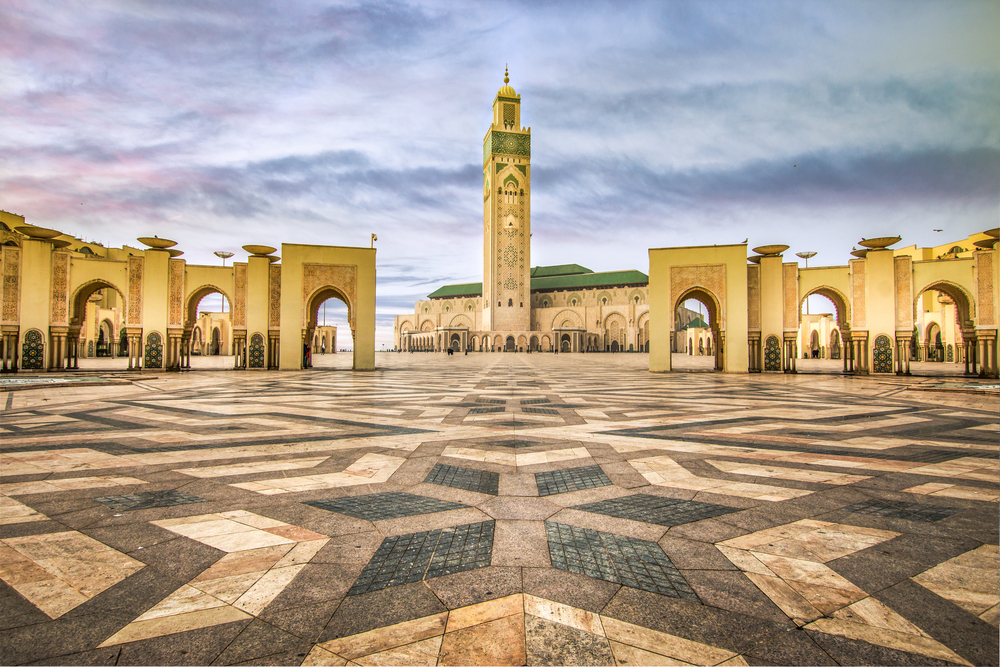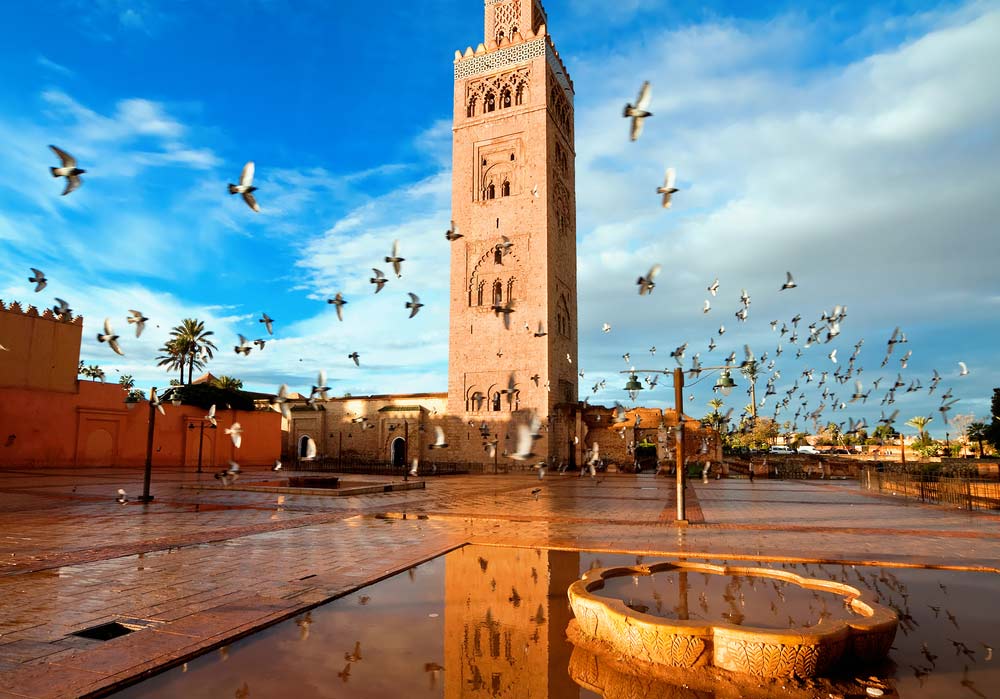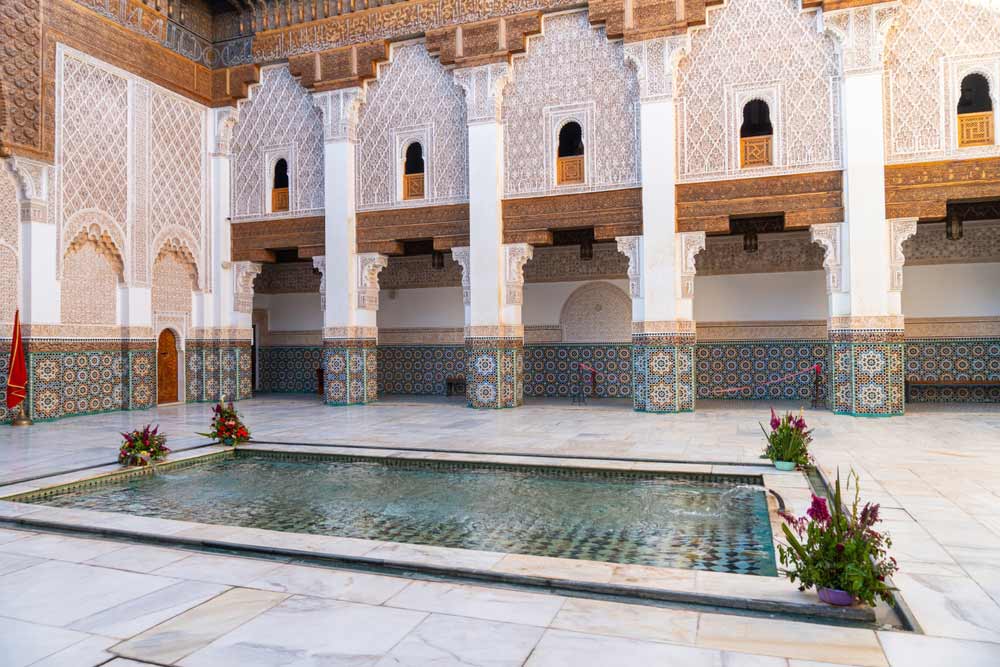Moroccan architecture is amazing and unique. It is a mix of different styles and cultures. Morocco is in North Africa and has a rich history. This history can be seen in its buildings. These buildings show the influence of many cultures, including Berber, Arab, and French.
The beauty of Moroccan architecture is in its details. You can see intricate tile work, beautiful arches, and grand courtyards. Each building tells a story of the past. The use of bright colors and patterns makes Moroccan buildings stand out. They are not only functional but also beautiful to look at.
Moroccan architecture is not just about the buildings. It is also about the materials used. Local materials like clay, wood, and stone are common. These materials help the buildings blend with the environment. The use of these natural materials also keeps the buildings cool in the hot climate.
One of the key features of Moroccan architecture is its variety. You will find different styles in different parts of the country. For example, in the city of Fes, the buildings are more traditional. In Casablanca, you will see a mix of modern and old styles. This variety makes exploring Moroccan cities exciting.
As we go deeper, we will explore the different design styles, famous buildings, and the influences that shaped Moroccan architecture. Each section will give you a better understanding of why Moroccan architecture is so special and important.
Design Styles
Moroccan architecture is famous for its diverse design styles. Each style has unique features and tells a part of Morocco’s story.

Moorish Architecture
Moorish architecture is one of the most well-known styles in Morocco. It includes beautiful arches, detailed tilework, and large courtyards. Buildings often have colorful mosaics and carved wood. This style is very elegant and eye-catching.
One famous example of Moorish architecture is the Alhambra Palace in Spain, which influenced many buildings in Morocco. The use of horseshoe arches, arabesques, and intricate patterns is a hallmark of this style. These designs are not only decorative but also carry deep cultural meanings. For instance, the geometric patterns symbolize infinity, reflecting the Islamic belief in the infinite nature of Allah.
Moorish architecture also often includes water features like fountains and pools, which add a sense of tranquility and coolness to the space. The courtyards, often surrounded by lush gardens, provide a serene escape from the outside world.
Andalusian Influence
The Andalusian influence came from Spain. It brought arches, fountains, and pretty gardens to Moroccan buildings. You can see this style in many old palaces and homes. It adds a sense of beauty and peace.
Andalusian architecture is known for its detailed stucco work and tiled walls. These tiles, called zellige, are often arranged in colorful and complex patterns. This style also emphasizes symmetry and harmony, creating a balanced and pleasing visual effect.
The influence is most visible in cities like Tangier and Chefchaouen. Buildings often have inner courtyards filled with orange trees and flowers. This style makes homes feel like peaceful sanctuaries. The use of light and shadow in Andalusian architecture is also noteworthy, as it enhances the beauty of the intricate designs and patterns.
Berber Architecture
Berber architecture is very different. It uses local materials like mud and stone. Berber homes often have flat roofs and thick walls. These features help keep the houses cool in the hot desert. This style is simple but very practical.
Berber villages are usually found in the mountains or desert regions of Morocco. The homes are built close together, forming compact communities. The flat roofs are used to dry crops and serve as extra living space. The thick walls not only provide insulation but also protect against the harsh desert winds.
The design of Berber architecture is influenced by the need for functionality and survival in a tough environment. However, it also includes decorative elements like painted doors and colorful rugs, showing the Berber people’s appreciation for beauty and art.
French Colonial Influence
The French colonial influence in Moroccan architecture began in the early 20th century. This style combines traditional Moroccan elements with European designs. It often features wide boulevards, modern buildings, and Art Deco details.
In cities like Casablanca and Rabat, you can see many examples of French colonial architecture. The buildings often have large windows, balconies, and decorative ironwork. This style brought new construction techniques and materials to Morocco, such as reinforced concrete and glass.
French colonial buildings often serve as government offices, schools, and hotels. They represent a period of modernization and change in Moroccan history. Despite their European origins, these buildings have been adapted to fit the local climate and culture, blending the old with the new.
Famous Buildings
Morocco is home to many famous buildings. Each one has its own story and architectural style. Let’s explore some of the most iconic ones.
Hassan II Mosque

The Hassan II Mosque in Casablanca is one of the largest mosques in the world. It sits on the edge of the Atlantic Ocean, with part of it built over the water. This mosque can hold 25,000 worshippers inside and another 80,000 in its courtyard.
The mosque’s architecture is stunning. It has a tall minaret, intricate tile work, and beautiful mosaics. The roof can even open to let in sunlight. The Hassan II Mosque is a modern marvel that combines traditional Moroccan design with advanced engineering.
Bahia Palace
Bahia Palace in Marrakech is a masterpiece of Moroccan architecture. It was built in the late 19th century for a wealthy nobleman. The palace has 150 rooms, each decorated with intricate designs and beautiful materials.
The palace features lush gardens, marble floors, and painted ceilings. The use of zellige tiles and carved stucco adds to its beauty. Each room and courtyard is unique, showing the craftsmanship of Moroccan artisans. The palace is a perfect example of how different architectural influences can come together to create something beautiful.
Koutoubia Mosque

The Koutoubia Mosque is the largest in Marrakech. It was completed in the 12th century and has a tall minaret that can be seen from miles away. The minaret is a classic example of Almohad architecture, with simple lines and elegant proportions.
The mosque’s prayer hall is large and spacious, with high ceilings and horseshoe arches. The exterior is decorated with intricate tilework and calligraphy. The Koutoubia Mosque is not only a place of worship but also a symbol of Marrakech’s rich history.
Saadian Tombs
The Saadian Tombs in Marrakech are a hidden gem of Moroccan architecture. They were discovered in 1917 and date back to the 16th century. The tombs are the final resting place of members of the Saadian dynasty.
The tombs are decorated with colorful tiles, intricate carvings, and marble pillars. The main mausoleum has a beautiful domed ceiling. The Saadian Tombs are a peaceful and beautiful place, showcasing the artistry of the past.
Architectural Influences
Moroccan architecture has been shaped by many influences. Each one has added something unique to the buildings we see today.
Islamic Influence
Islamic architecture has a big impact on Moroccan buildings. This influence can be seen in the use of geometric patterns, calligraphy, and arches. Islamic design focuses on beauty and function, creating spaces that are both practical and pleasing to the eye.
Mosques and palaces often have large courtyards and fountains, which are typical of Islamic architecture. The use of light and shadow is also important, adding to the beauty of the designs. Islamic architecture has helped shape the unique look of Moroccan buildings.
Spanish and Andalusian Influence

The Spanish and Andalusian influence came to Morocco during the Middle Ages. This style brought beautiful arches, courtyards, and gardens. The use of colorful tiles and intricate patterns is a key feature.
Cities like Tangier and Chefchaouen show this influence in their buildings. Homes often have inner courtyards filled with plants and water features. This style creates a peaceful and beautiful environment.
Berber Traditions
Berber traditions have also shaped Moroccan architecture. Berber homes are made from local materials like mud and stone. They are designed to keep cool in the hot desert climate.
Berber villages are usually found in the mountains or desert regions. The homes are built close together, forming compact communities. The flat roofs are used to dry crops and serve as extra living space. Berber architecture is simple but practical, reflecting the needs of the people who live there.
French Colonial Impact
The French colonial period brought new styles to Morocco. This influence can be seen in the wide streets, modern buildings, and Art Deco details. French colonial architecture combines European design with Moroccan elements.
Cities like Casablanca and Rabat have many examples of this style. The buildings often have large windows, balconies, and decorative ironwork. French colonial architecture represents a period of change and modernization in Morocco.
Conclusion
Moroccan architecture is a beautiful blend of many influences. From the elegant Moorish designs to the simple Berber homes, each style has something unique to offer. Famous buildings like the Hassan II Mosque and Bahia Palace show the skill and creativity of Moroccan artisans. The influence of Islamic, Spanish, Berber, and French styles has created a rich and diverse architectural heritage.
Understanding these different styles and influences helps us appreciate the beauty and history of Moroccan architecture. It also shows the importance of preserving these buildings for future generations. Moroccan architecture is not just about buildings; it’s about culture, history, and art.
As we have seen, each style and influence has played a part in shaping the unique look of Moroccan buildings. By exploring these different aspects, we gain a deeper understanding of the country’s rich architectural heritage.
